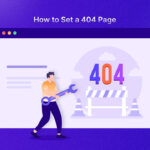Creating an effective website design questionnaire is essential for understanding the unique needs and goals of your design clients. This tailored approach helps align with your client’s vision and also sets the foundation for a successful project. With the rise of eCommerce website design, having a versatile client questionnaire for website design has become crucial. Employing a comprehensive questionnaire, including client questionnaire examples, ensures you cover all bases from aesthetic preferences to technical requirements.

On top of that, incorporating a web design client questionnaire into your process can streamline communication and improve project efficiency. It empowers you to gather crucial information about your client’s business objectives, target audience, and desired user experience, making it easier to deliver a website that meets their needs. You can even facilitate this process by using a ready-made questionnaire for website templates to enhance your workflow and deliver a client-specific web presence.
💡 Understanding Your Client’s Business & Objectives
To effectively understand your client’s business and objectives, your website design questionnaire should be meticulously crafted to gather comprehensive insights. This information is essential for designing a website that aligns with its vision and meets the specific needs of its target audience. Here are key areas to focus on:
Business Overview & Goals:
👉 Company mission, vision, and history
👉 Unique selling proposition
👉 Short-term and long-term business objectives
👉 Key competitors and competitive advantages
Target Audience & Market:
👉 Demographics, preferences, and behavior of the target audience
👉 Market trends, challenges, and opportunities
👉 Client’s positioning within the market
Website Specifics:
👉 Purpose of the website, such as eCommerce, informational, portfolio
👉 Desired features and functionalities
👉 Examples of websites in the same industry that the client admires
👉 Current website’s strengths and weaknesses
👉 Content readiness and requirements
👉 Branding guidelines and materials available
Additionally, understanding the client’s budget, timeline, and maintenance expectations will help set realistic project scopes. This comprehensive approach helps in creating a more effective website design and also fosters a stronger relationship with your client by demonstrating a deep understanding of their business and objectives.
💡 Identifying the Target Audience & User Experience Expectations

Identifying your client’s target audience and user experience expectations is one of the focal steps in the website design questionnaire process. This phase ensures the final website design aligns with the users’ needs and preferences, encouraging a positive and effective user experience. Here are the key considerations and methods to accurately pinpoint these critical aspects:
Target Audience Identification:
👉 Age, gender, location, and income level
👉 Interests, values, and lifestyle
👉 Online behavior patterns, purchasing habits
👉 Specific problems the website or product solves
👉 Understanding the audience’s comfort level with technology
User Experience Expectations:
👉 Ensuring content integrity and transparency
👉 Engaging and informative content tailored to the audience
👉 Intuitive layout and fast loading times
👉 Optimal viewing across all devices
👉 Adhering to WCAG guidelines for inclusive design
Methods for Understanding the Audience
👉 Surveys, interviews, and market analysis
👉 Detailed profiles based on real data and insights
👉 To track and analyze user behavior on existing platforms
👉 Direct input from the target audience to refine the design approach
🧑💻 Determining the Technical & Design Requirements
Determining the technical and design requirements for a website is a critical step in the website design questionnaire process. This ensures that the final product not only looks good but also functions seamlessly across different platforms and meets all security standards. Here are key areas to focus on:
Technical Requirements:
👉 Ensure the website adapts to various screen sizes, providing an optimal viewing experience across all devices.
👉 SSL Certificate: A must-have for securing web traffic and building trust with users.
👉 Select a reliable website hosting service to store website files and keep the site running smoothly.
👉 Test the website across multiple browsers to ensure consistent display and functionality.
👉 Page Load Times: Aim for less than a 2-second load time to improve user experience and SEO rankings.
👉 XML Sitemap and Redirects: Implement an XML sitemap for better indexing and redirects for any updated pages.
Design Requirements:
👉 Clearly define typefaces, font numbers, line heights, and letter spacing.
👉 Mobile Responsiveness: Essential for reaching users on smartphones and tablets.
👉 Call to Action (CTA): Incorporate clear CTAs to guide user interaction.
📝 The Ultimate Website Design Questionnaire for Your Clients
Crafting the ultimate website design questionnaire is an essential step in ensuring project success and aligning with your client’s expectations. Here is how to create a comprehensive and effective questionnaire.
Choose the Right Tool
Opt for user-friendly platforms like Google Forms or JotForm to design your questionnaire. These tools offer simplicity and efficiency, allowing for easy data collection and analysis.
Questionnaire Structure
👉 Basic Information: Start with the client’s name, company, and contact details.
👉 Business Background: Research the company’s mission, values, target audience, and competitors.
👉 Technical Questions: Inquire about desired website features, hosting preferences, and any specific technologies they need to implement.
👉 Design Preferences: Ask for color schemes, typography, and any websites they admire.
👉 Project Details: Cover the project’s scope, timeline, budget, and any additional requirements.
Best Practices
👉 Keep It Simple: Use straightforward language, avoiding technical jargon.
👉 Closed-Ended Questions: Facilitates analysis and keeps responses focused.
👉 Avoid Double-Barreled Questions: Ensure each question seeks only one piece of information.
By adhering to these guidelines, you will create a website design questionnaire that not only gathers essential information but also builds a foundation for a successful project, ensuring both you and your client are on the same page from the start.
🚀 Website Design Questionnaire: Your Way to Perfect Web Design
A comprehensive website design questionnaire streamlines communication, enhances project efficiency, and ensures alignment with the client’s vision. Reflecting on these strategies highlights the importance of meeting client expectations, achieved through targeted questionnaires and structured project management. This approach fosters successful, client-centric web design projects, facilitating ongoing partnerships and continuous improvement.
If you have found this blog helpful, feel free to share your opinion and feedback on how you would agree or disagree with our Facebook community. You can also choose to subscribe to our blogs for valuable tutorials, guides, knowledge, tips, and the latest WordPress website updates.







